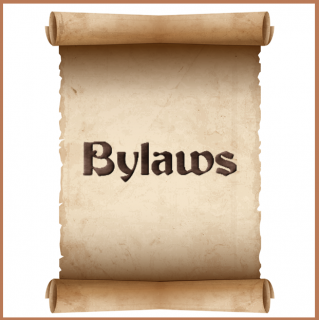Effective Congregational Governance
Part of The Congregational Handbook
How members of a congregation make decisions together reflects on who they are and what they believe. Whose voices are heard? Who is included in discussions? Is there room for quieter voices? Is time given for reflection and inclusion?
Governance Models
There is no one governance model for UU congregations. Congregations choose for themselves how to make decisions and how to distribute power, authority and accountability. Here are some options:
Dan Hotchkiss’s Governance and Ministry Model
Dan Hotchkiss’s Governance and Ministry Model
By Dan Hotchkiss
A congregation has to organize to make its big decisions in its best and deepest frame of mind: that’s governance. It needs to organize to focus limited resources on its most important goals: that’s ministry.
(For an overview of how Hotchkiss’s model differs from the Carver model [below] see his article How I am Different from John Carver.)
The Unity Consulting Model
The Unity Consulting Approach to Congregational Governance
By Laura Park
Unity offers deep questions and commitments for governance within a progressive religious, covenantal context: Whose Are We? What Do We Value? What Are Our Commitments?
Sociocracy (Also Known as the Dynamic Governance Model)
Sociocracy Resources for Dynamic GovernanceBooks and Training for Decentralizing Leadership
By Renee Ruchotzke
Also known as Dynamic Governance. Books, Articles and Training for Decentralizing Leadership
Carver Model of Policy Governance
Carver Model of Policy Governance
By Margaret A Keip
Policy Governance is a fundamental redesign of the role of a Board, emphasizing values, vision and the empowerment of both Board and staff through policies, limitations and monitoring reports.
Congregational Bylaws
A Comprehensive Guide to Writing Congregational Bylaws
Bylaws exist to support and enhance the functioning of the congregation. Good bylaws provide good process. Bylaws are important in laying the groundwork for any organization. Although written in language to satisfy legal requirements, bylaws also encapsulate the vision, hopes, and dreams of the…
Board Policies & Committees
A Guide to Creating a Board Policies
No matter the size of your congregation, policies can help to build institutional memory and structure, but can have the flexibility to be changed when needed.
Board Committees
By Congregational Life
Boards may find that delegating part of their fiduciary work to committees (e.g. safety, finance, personnel) and/or task forces helps to free them up for more strategic work.
Procedures
Thinking about Congregational Procedures
By Kathy McGowan
Procedures should have the flexibility to change as the organization changes size, staff, technologies and other situational factors.







